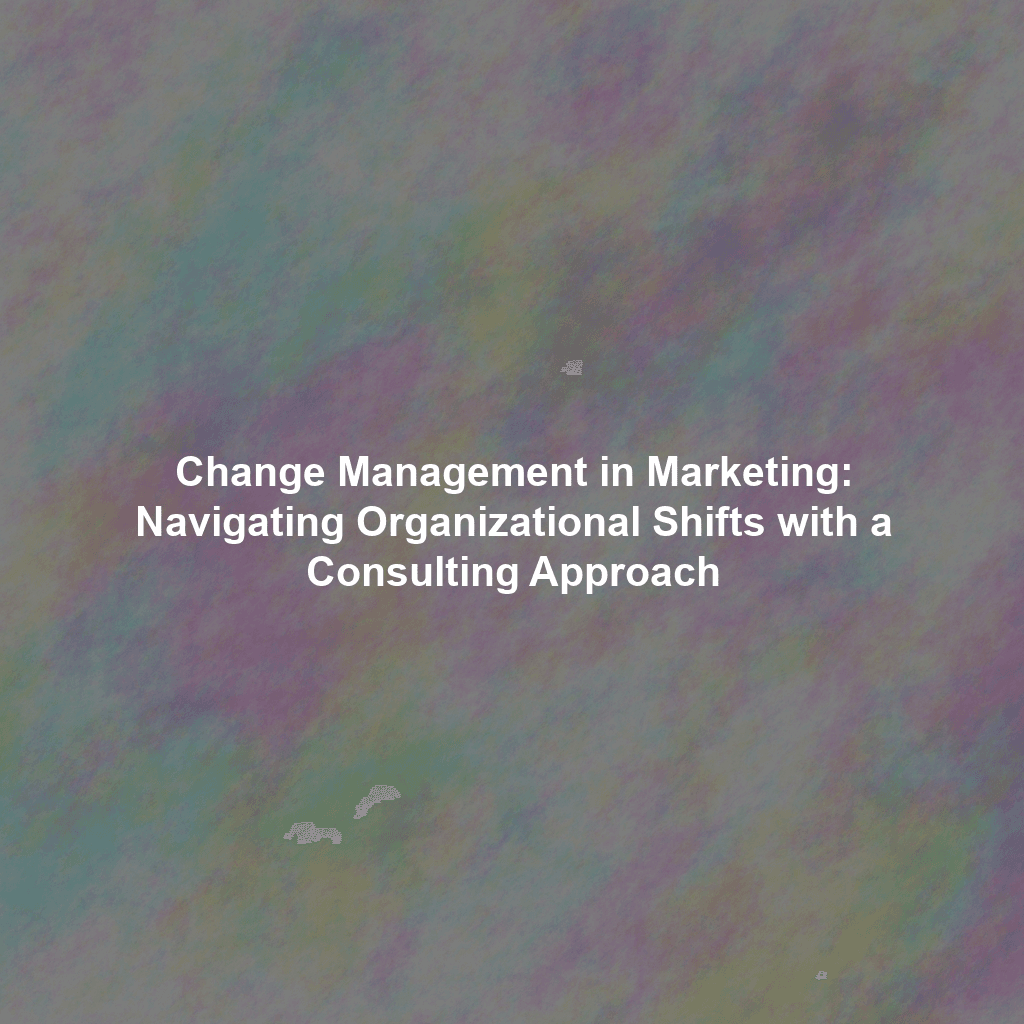The Unique Challenges of Change Management in Marketing
While change management principles are universal, marketing organizations face specific challenges:
- Rapid Technological Advancements: The MarTech landscape is vast and constantly evolving. Teams must quickly adopt and master new tools and platforms, often with limited training and resources.
- Data-Driven Imperative: Marketing is increasingly reliant on data analytics. This requires new skills, revised processes, and a shift in mindset towards data-informed decision-making.
- Customer-Centric Focus: The customer experience is paramount. Changes must always be evaluated through the lens of how they impact the customer journey and overall satisfaction.
- Creative Culture: Marketing teams often foster a creative and agile environment. Change initiatives must respect this culture while still driving necessary improvements.
- Siloed Departments: Traditional marketing structures can create silos between departments, making it difficult to implement changes across the entire organization.
A Consulting-Inspired Approach to Change Management
Top-tier consulting firms bring a structured, data-driven, and results-oriented approach to change management. Here’s how you can adapt their principles:
1. Diagnosis & Assessment: Understanding the “As-Is” State
Before implementing any change, a thorough diagnosis is crucial. This involves:
- Stakeholder Interviews: Conducting interviews with key stakeholders to understand their perspectives, concerns, and expectations.
- Data Analysis: Analyzing relevant data to identify areas for improvement and measure the impact of potential changes. For instance, analyzing campaign performance data to identify underperforming channels.
- Process Mapping: Mapping out existing marketing processes to identify bottlenecks and inefficiencies.
- Skills Gap Analysis: Assessing the skills and competencies of the marketing team to identify any gaps that need to be addressed through training or recruitment.
2. Vision & Strategy: Defining the “To-Be” State
Based on the diagnosis, develop a clear vision for the future state. This vision should be:
- Specific and Measurable: Define concrete goals and key performance indicators (KPIs) to track progress.
- Aligned with Business Objectives: Ensure that the change initiative supports the overall business strategy.
- Communicated Effectively: Clearly articulate the vision to all stakeholders, explaining the benefits of the change.
3. Implementation: Putting the Plan into Action
The implementation phase is where the rubber meets the road. Key considerations include:
- Pilot Programs: Test the change on a small scale before rolling it out across the entire organization. This allows for adjustments and minimizes risk.
- Cross-Functional Teams: Establish cross-functional teams to ensure that the change is implemented effectively across all departments.
- Agile Iterations: Adopt an agile approach to implementation, allowing for flexibility and adaptation based on feedback and results.
4. Communication: Keeping Everyone Informed and Engaged
Effective communication is paramount to the success of any change initiative. Key principles include:
- Transparency: Be open and honest about the reasons for the change, the potential impact, and the timeline.
- Two-Way Communication: Encourage feedback from stakeholders and address their concerns promptly.
- Multiple Channels: Use a variety of communication channels, such as email, meetings, and internal communication platforms, to reach all stakeholders.
- Consistent Messaging: Ensure that the message is consistent across all channels and that all leaders are aligned.
5. Training & Development: Equipping the Team for Success
Change often requires new skills and knowledge. Invest in training and development programs to equip the marketing team with the necessary capabilities. This can include:
- Technical Training: Providing training on new technologies and platforms.
- Process Training: Training on new processes and workflows.
- Leadership Development: Developing the leadership skills of managers to help them guide their teams through the change.
- Mentorship Programs: Pairing experienced employees with those who are new to the change.
6. Stakeholder Engagement: Building Buy-In and Support
Engaging stakeholders throughout the change process is critical for building buy-in and support. This involves:
- Identifying Key Stakeholders: Identifying the individuals or groups who will be most affected by the change.
- Understanding Their Needs: Understanding their concerns, expectations, and priorities.
- Involving Them in the Process: Involving them in the planning and implementation of the change.
- Addressing Their Concerns: Addressing their concerns and providing them with the information and support they need.
7. Monitoring & Evaluation: Measuring the Impact and Making Adjustments
Continuously monitor the progress of the change initiative and evaluate its impact. This involves:
- Tracking Key Performance Indicators (KPIs): Tracking the KPIs that were defined in the vision and strategy phase.
- Gathering Feedback: Gathering feedback from stakeholders to assess their satisfaction and identify any areas for improvement.
- Making Adjustments: Making adjustments to the change initiative based on the data and feedback gathered.
Conclusion: Embracing Change as a Constant Opportunity
Change is inevitable in the dynamic world of marketing. By adopting a structured, data-driven, and stakeholder-centric approach, inspired by the methodologies of top consulting firms like McKinsey, BCG, Oliver Wyman, and Bain, marketing organizations can not only navigate organizational shifts successfully but also embrace change as a constant opportunity for growth and innovation. Focusing on clear communication, targeted training, and proactive stakeholder engagement are the cornerstones of a successful change management strategy, ultimately leading to a more agile, adaptable, and high-performing marketing team.
 Skip to content
Skip to content

